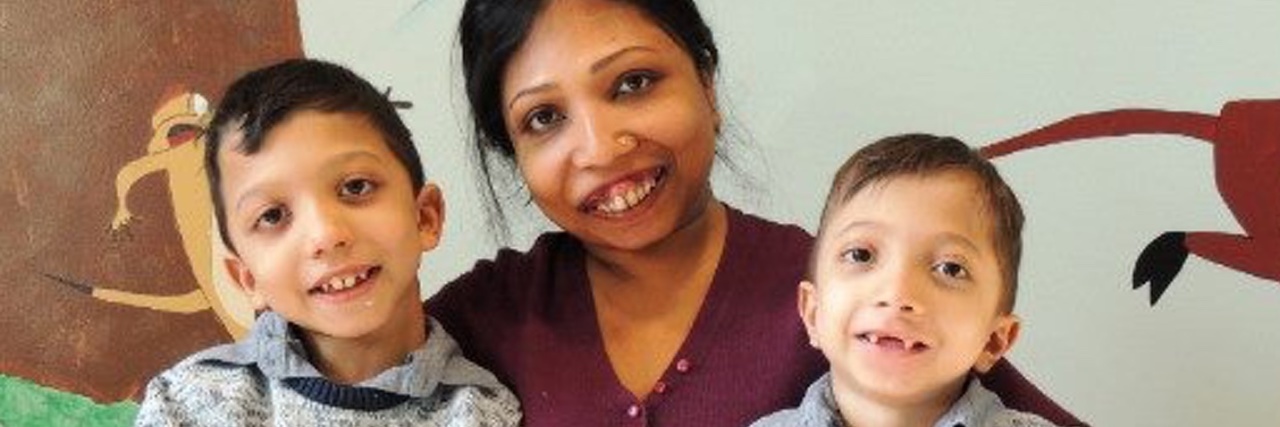Jansen’s metaphyseal chondrodysplasia (JMC) is an ultra-rare skeletal disease that affects less than 30 people worldwide.
It is an autosomal dominant skeletal dysplasia, meaning only one parent has to carry the gene for their child to inherit it. Interestingly, I never got a diagnosis until my second son, Jahan, was born.
JMC causes symptoms such as:
- Short-limbed short stature
- Waddling gait
- Bowed legs
- Contracture deformities of the joints, caused by the shortening or hardening of tissue
- Small hands with clubbed fingers
- Clinodactyly (fingers that curve toward the palm)
- A prominent upper face and small jaw
- Chronic parathyroid hormone-independent hypercalcemia, which causes high blood levels of calcium
- Hypercalciuria, excess calcium in urine
- Mild hypophosphatemia, low levels of phosphate in the blood
In short, JMC affects our daily lives in ways we are still discovering. With not much research out there, I had to really hustle to create a collaborative network of patients and researchers to make the dream of treatment a reality.
In 2017, I set up the Jansen’s Foundation to raise awareness for JMC and find better treatments for this debilitating condition. And our efforts are paying off! The foundation is looking at our first-ever clinical trial for Jansen’s disease in 2020.
Being a rare disease patient and a mom to two boys who inherited my “bad” genes has been an incredibly challenging road. But I am grateful for the many profound moments of joy and tenderness my boys share with each other.
For those interested in learning more about JMC, here are five things you should know.
1. JMC is usually diagnosed during childhood.
The condition is diagnosed based on a combination of radiographic and biochemical abnormalities. However, some patients are not diagnosed until adulthood.
2. JMC is the result of a genetic mutation.
JMC is caused by a mutation in a gene that encodes for a specific protein (i.e., PTH/PTHrP receptor). This affects your parathyroid hormone which helps regulate the levels of calcium in your blood.
3. Most cases of JMC occur randomly.
Most JMC cases are the result of a spontaneous genetic mutation. Inheritance is autosomal dominant, meaning only one parent has to have the gene for you to get it. Currently, there are about 30 patients worldwide with JMC.
4. JMC causes a variety of symptoms.
The main symptoms I experience are bending bones, poor mineralization, and metabolic imbalances. Other symptoms include diminished muscle mass and gradual swelling of certain joints, low coordination and sometimes blindness and/or deafness.
5. There are currently no treatments for JMC.
There are no known treatments for JMC, however, with the help of the Jansen’s Foundation, researchers at Harvard Medical School have created a peptide to normalize the activity of the abnormal PTH/PTHrP receptor protein present in Jansen patients. This treatment will be tested in humans soon.
The ability to test this treatment gives hope to the power of precision medicine and the future of drug development pathways for rare diseases.

